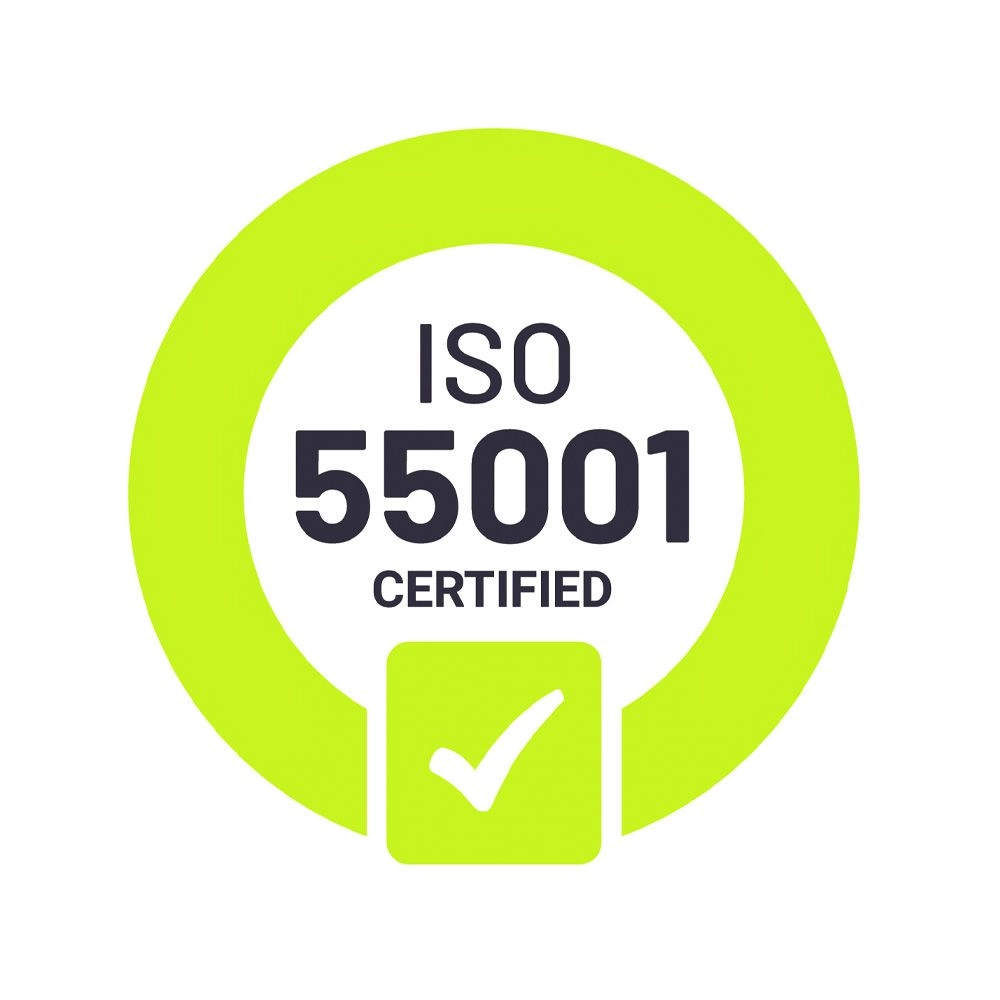ISO 55001 Asset Management
ISO 55001:2014 Asset management — Management systems — Requirements (AMS)
ISO 55001 standard specifies the requirements for the establishment, implementation, maintenance and improvement of the asset management system.
- Organizations of all types and sizes and natures can implement ISO 55001 AMS.
It does not matter what size your organization is:- Any organisation with as few as 2 persons to as large as million persons can benefit from ISO 55001 AMS.
- Any industry, especially a capital-intensive one, has a large number of physical assets to manage with high-value fixed costs. These may include utilities, construction, property management, transportation, oil & gas, automobiles, manufacturing firms, real estate, metals and mining.
- Any organization that wants to manage assets effectively to optimise their lifetime value, whether tangible or intangible, including everything from IT components to property, inventory, and intellectual property, and owned or leased by the company to operate.
- Any organization that wants to gain an internationally recognized framework for implementing an asset management system.
- If you want to develop a strategic asset management plan that will enable you to identify and reduce risk by implementing a risk-based system of reliability-focused planned preventive maintenance.
- If you want to demonstrate to stakeholders, including funders, regulators and your insurer, that you have effective control over the assets for which you are responsible.
- If you want to extend the life of your assets by effective maintenance.
- If you want to manage and mitigate risks within your pool of assets, whilst benchmarking performance across all sectors and improving your financial performance to align with organizational growth strategies.
- You may face the risks and lost opportunities involved with not having an ISO 55001:
- where ISO 55001 may be a legal or contractual requirement; and
- you will potentially be eligible for more lucrative, large scale both government and private sector contracts that are only offered to organisations that have ISO 55001.
- Boundaries and applicability of the asset management system to determine the scope.
- Asset Management System Policy.
- Asset management objectives at relevant functions and levels.
- Organization Structure, Positions, Duties, Responsibilities and Authorities.
- A strategic asset management plan that includes an explanation of the relationship between the organisational objectives and the asset management objectives. It must also explains the role of asset management system.
- Individual Asset Management Plans:
- explaining how a specific asset will be kept in service condition over its lifetime;
- that define the activities, resources, responsibilities, and timelines for implementing the SAMP and achieving asset management objectives;
- that also cover many other things, such as risks and opportunities, arrangements to deal with them, methods and criteria for decision-making, etc
- Operational Management Procedures: Procurement Procedures, Supply Chain Management Control, Management of Change, Contractor Management, Finance Management and etc.
Clause 4 Context Of The Organization
4.1 Understanding the organization and its context
4.2 Understanding the needs and expectations of stakeholders
4.3 Determining the scope of the asset management system
4.4 Asset management system
Clause 5 Leadership
5.1 Leadership and commitment
5.2 Policy
5.3 Organizational roles, responsibilities and authorities
Clause 6 Planning
6.1 Actions to address risks and opportunities for the asset management system
6.2 Asset management objectives and planning to achieve them
Clause 7 Support
7.1 Resources
7.2 Competence
7.3 Awareness
7.4 Communication
7.5 Information requirements
7.6 Documented information
Clause 8 Operation
8.1 Operational planning and control
8.2 Management of change
8.3 Outsourcing
Clause 9 Performance Evaluation
9.1 Monitoring, measurement, analysis and evaluation
9.2 Internal audit
9.3 Management review
Clause 10 Improvement
10.1 Nonconformity and corrective action
10.2 Preventive action
10.3 Continual improvement
We adopt four stages of the most practical and methodological process to help you certified for ISO 55001.
Stage 1: Planning
Conduct Kick-Off Meeting to:
- establish implementation schedule and plan;
- appoint AMS Committee;
- establish an ISO 55001 AMS documentation framework; and
- have a fundamental understanding of the requirements of ISO 55001.
Drafting and writing documents to comply with ISO 55001 requirements:
- AMS Manual;
- Job Description;
- AMS Core Procedures:
- AMS Supporting Process Procedures;
- AMS System Procedures; and
- AMS Forms, Work Instructions and others.
- Guidance and advice on the implementation of the documented AMS.
- To conduct ISO 55001 AMS Internal Audit Training.
- To conduct an ISO 55001 AMS Internal Audit.
- To conduct an ISO 55001 AMS Management Review Meeting.
- Stage 1 Documentation Audit by the Certification Body.
- Rectification of Stage 1 Audit Finding issued by the Certification Body.
- Stage 2 Audit Compliance Audit by the Certification Body.
- Rectification of Stage 2 NCRs issued by the Certification Body.
Inquiry - ISO 55001 Asset Management









